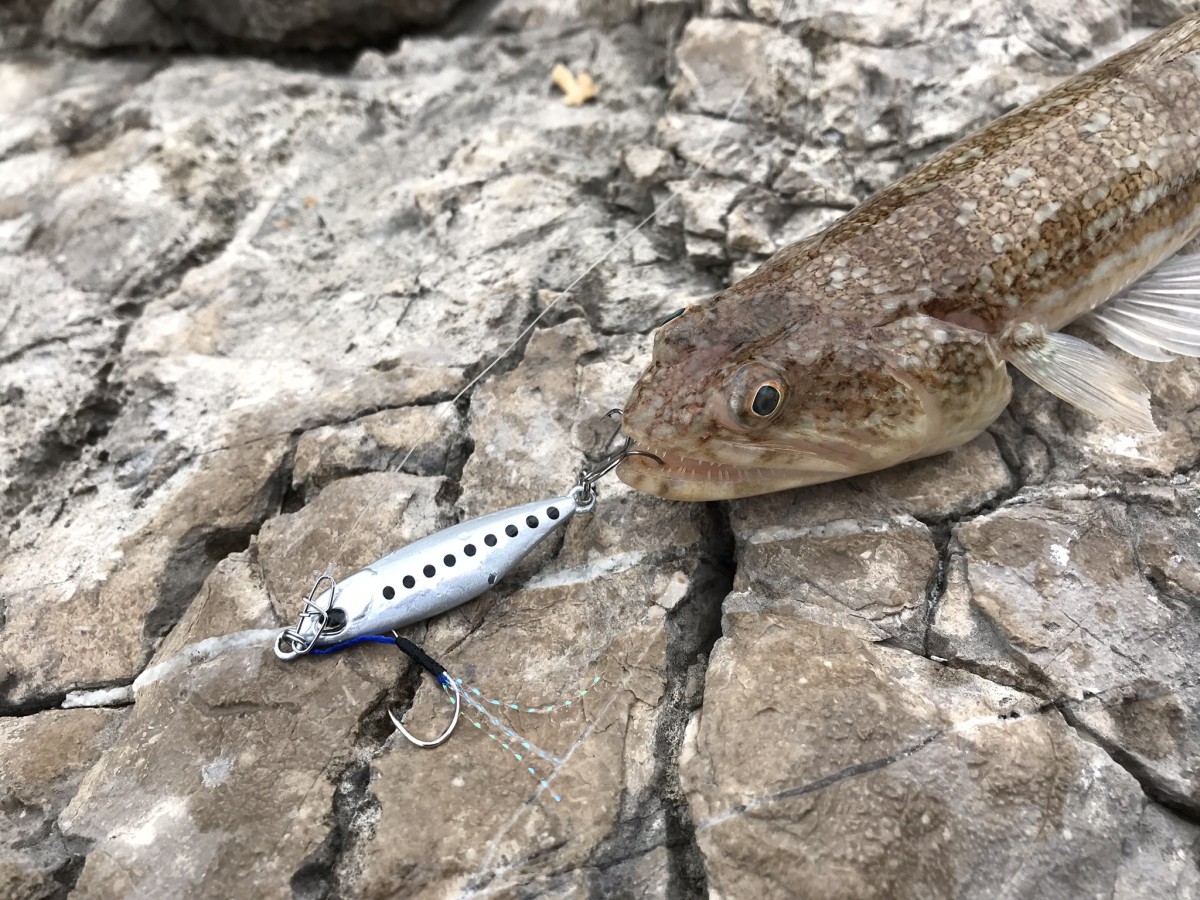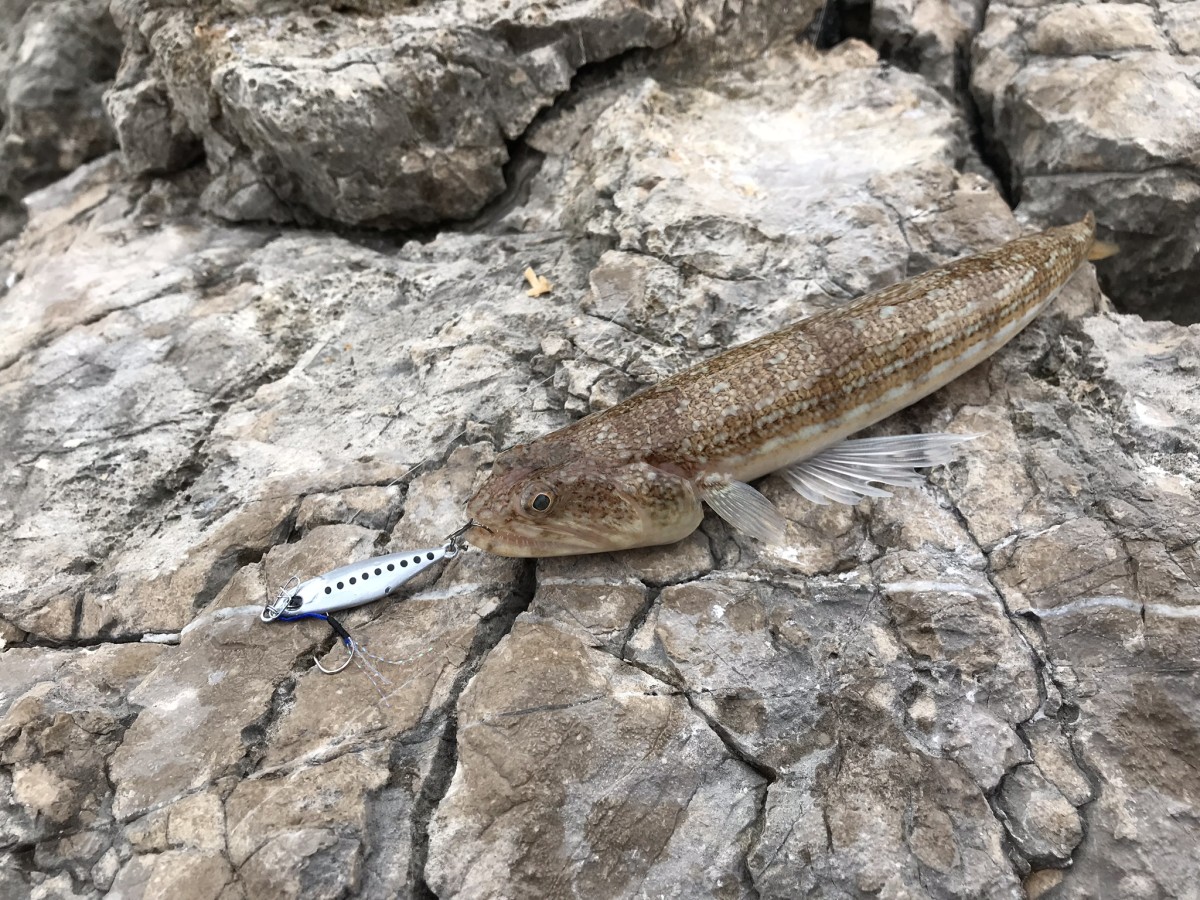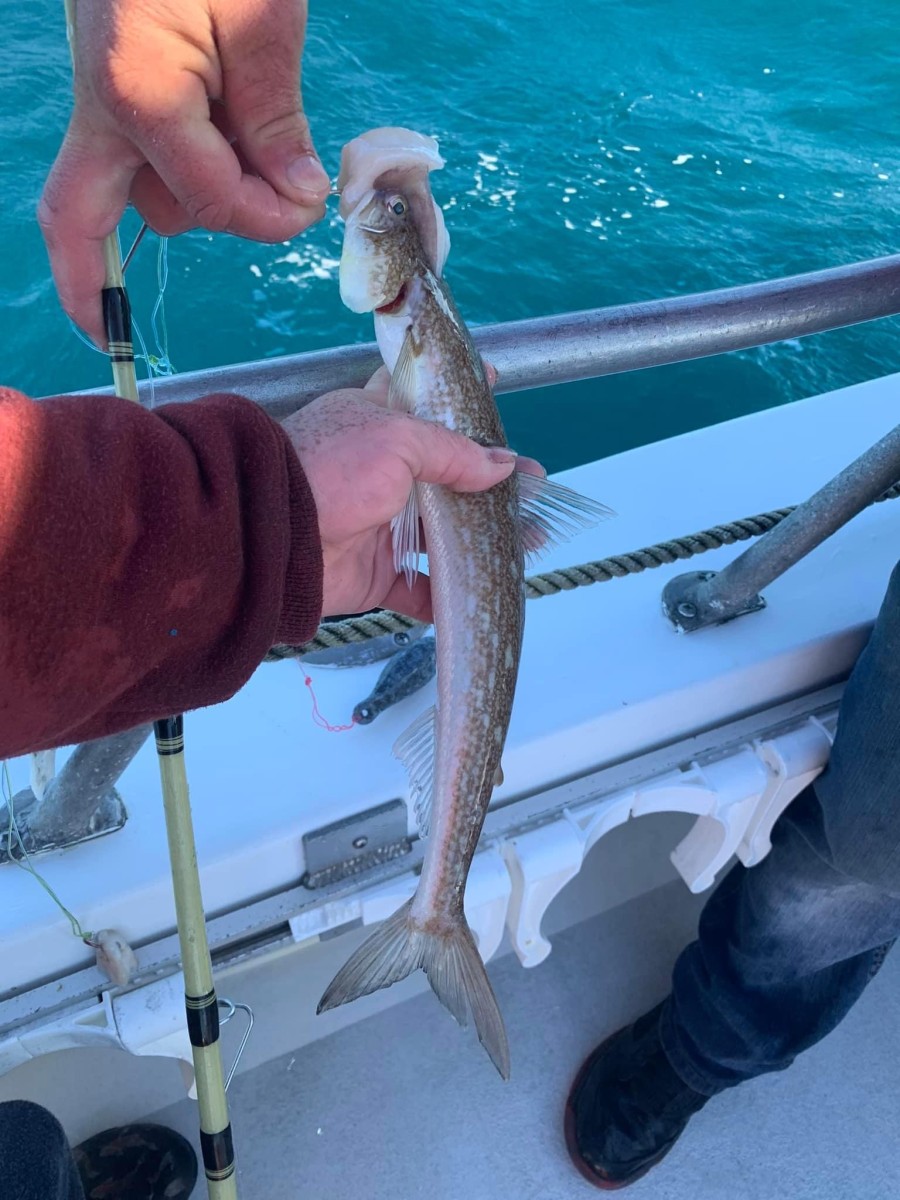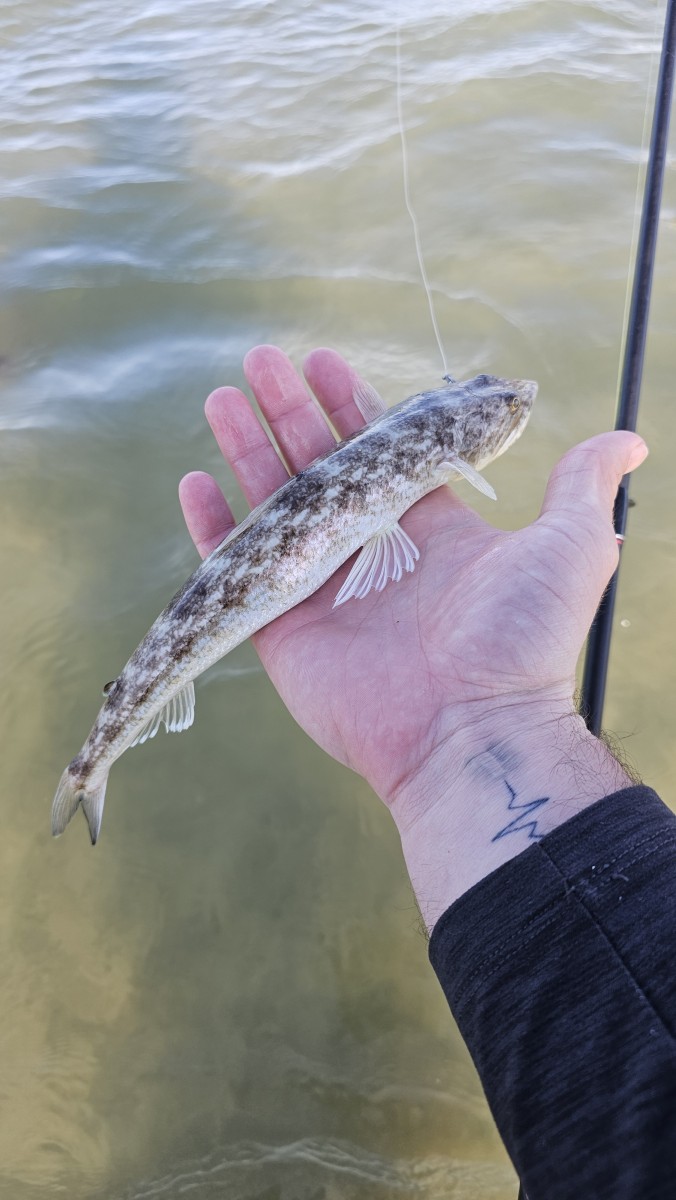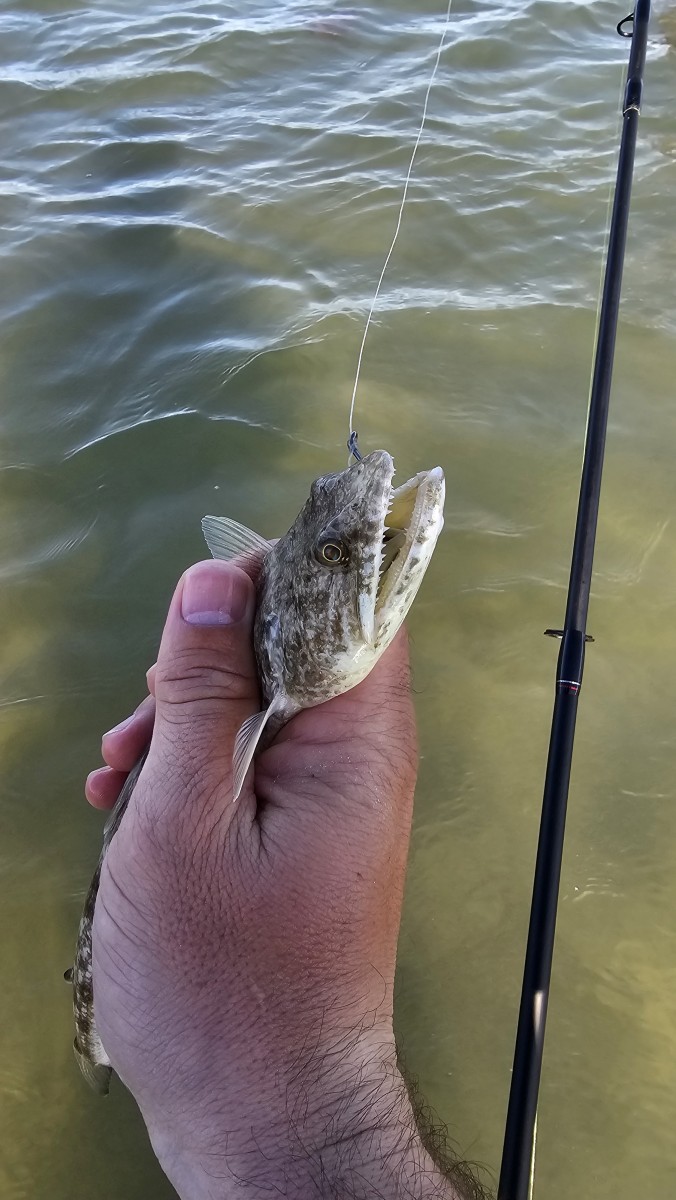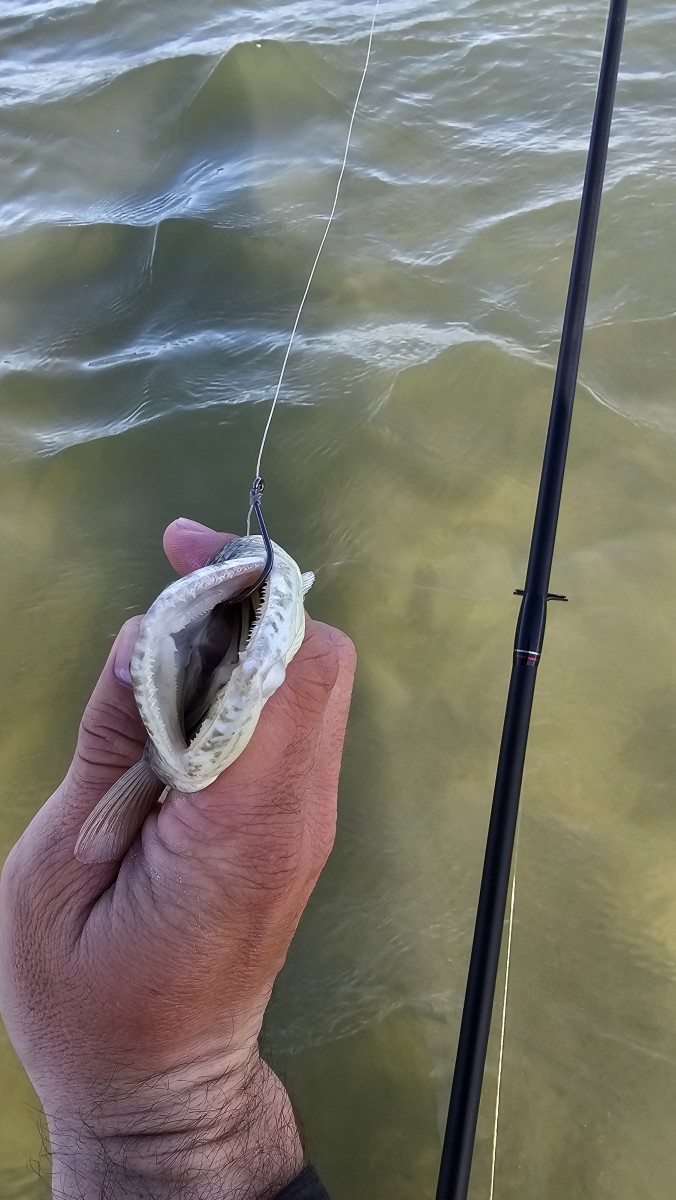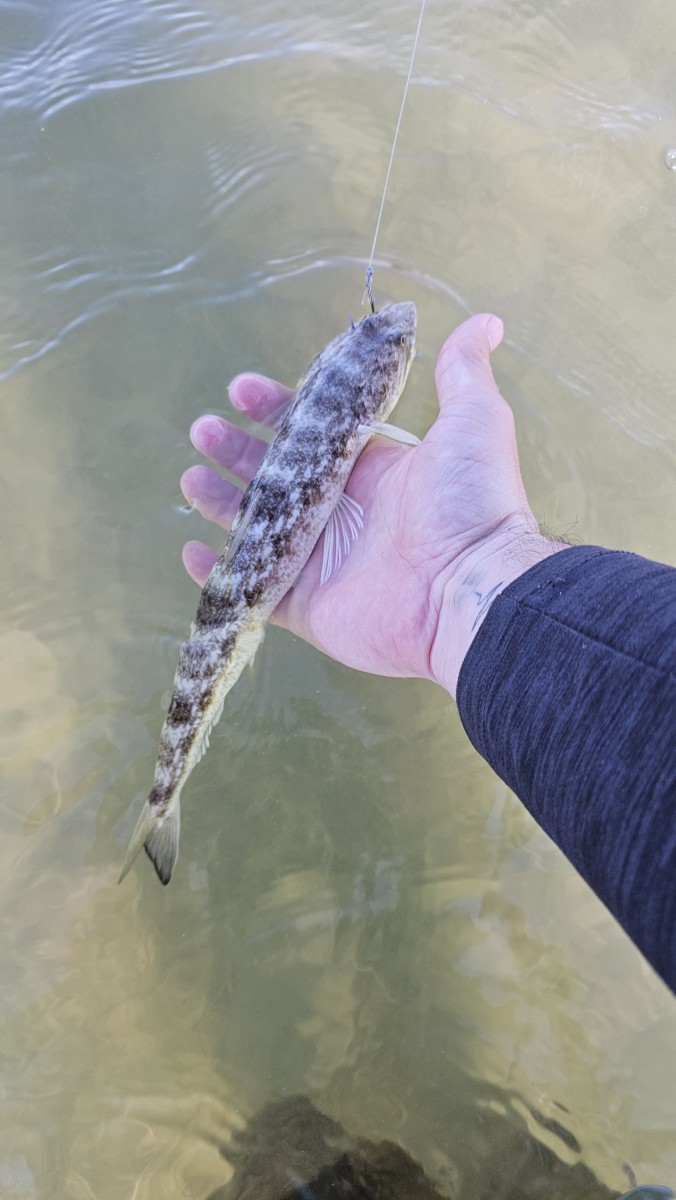Inshore lizardfish
(Synodus foetens)
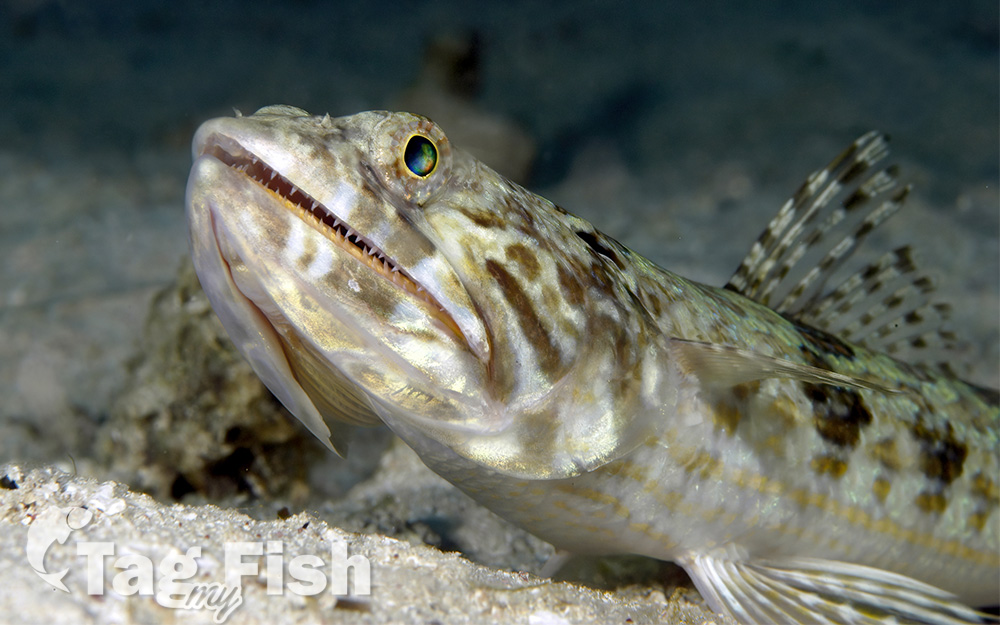
Classification
General data
The inshore lizardfish (Synodus foetens) is a member of the family Synodontidae found in the western Atlantic.
The inshore lizardfish has a maximum length recorded of about 50 cm but generally we see them at about 40 cm long. Their lifespan can be up to nine years.
The body of this species is elongated, similar to a cigar. The maximum weight has been seen as 900 g. Females are generally larger than males when mature.
The shape of the mouth of this species is large and pointed. The snout is pointed. The top jaw extends beyond the eye. Many slender teeth are present in the roof of the mouth and jaws. The lateral line is considered to be well marked.The lateral line encompasses around 60 scales along the length. The inshore lizardfish has no dorsal spines, 10-13 dorsal soft rays, no anal spines, 11-13 anal soft rays, and 56-62 vertebrae.
The color of the dorsal side of the lizardfish ranges from various shades of brown to olive. The belly side ranges from white to yellow. Juveniles have dark spots, these spots are reduced/absent in adults. The sides of the inshore lizardfish have patches that are diamond-shaped. These patches vary in occurrence and intensity, they usually fade with growth and usually occur at the midlateral line on the fish.
The dorsal fin is on the center of the back. An adipose fin is present in this species, usually showing a darker spot. The adipose fin is small in size with the base of the fin being no longer than the diameter of the pupil. The anal fin is usually equal in length or longer than the dorsal fin.
The inshore lizardfish is widely distributed. This fish can be found over soft-bottom inshore areas, especially in the northern Gulf of Mexico described as in the western Atlantic from New Jersey south along the U.S. coast, Bermuda, the Bahamas, and in the Caribbean from Cuba, Jamaica, Puerto Rico, and St. Martin.
